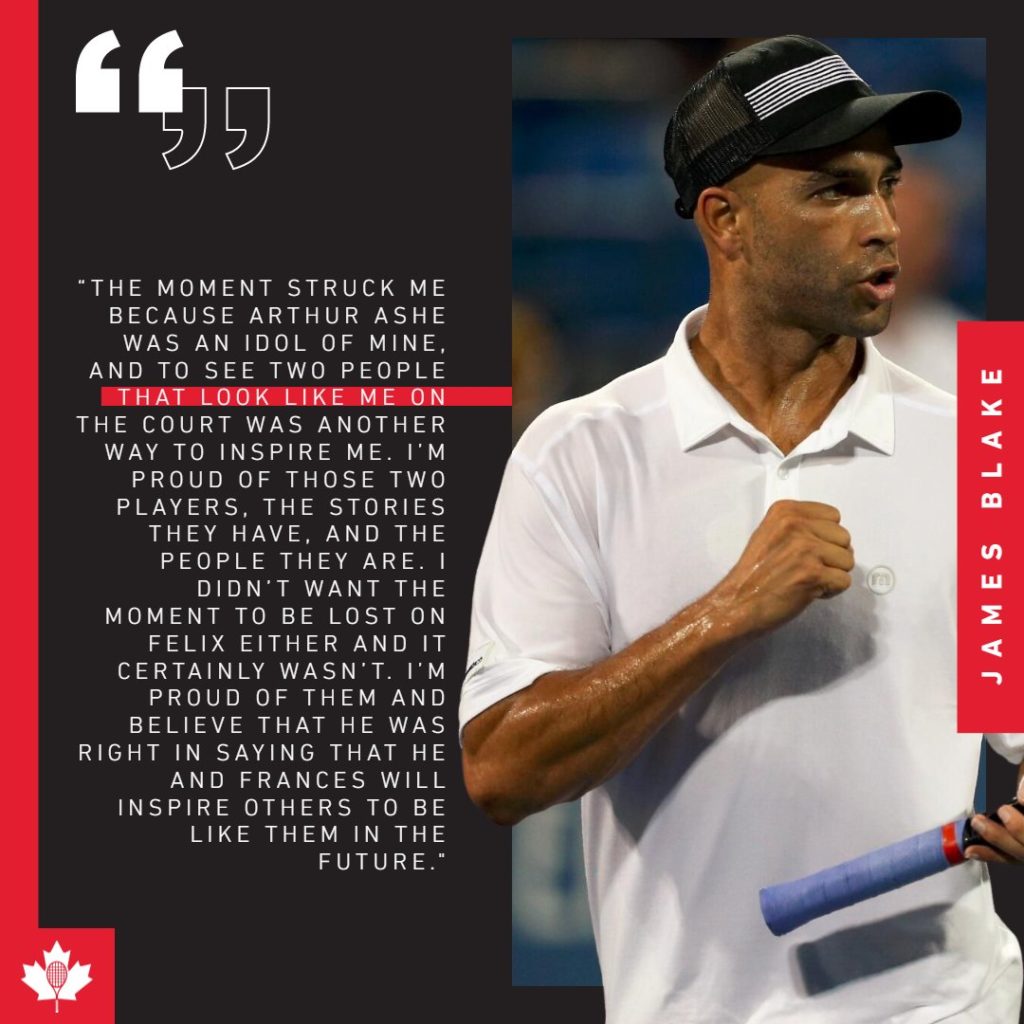
Photo: Peter Power/Tennis Canada
Disclaimer : The information in this article is dated as of the date of publication.
For the month of February, Tennis Canada is celebrating Black History Month. Here, we take a moment to reflect on how Félix Auger-Aliassime, a proud Canadian and black professional player, is inspiring the next generation with his efforts on and off the court.
After breaking into the Top 10 for the first time in his career in November 2021, Félix Auger-Aliassime took to Twitter and Instagram to share some of his thoughts on his 2021 season.
“Every season starts with the same objective. Become a better player than I was the season prior. Looking back, I’m proud to see that I’ve accomplished that objective by reaching new milestones in my career.”
With a couple of very impressive showings at the ATP Cup and the Australian Open so far this season, the 21-year-old Canadian is well on his way to topping last season’s performance. One step at a time, Auger-Aliassime continues to grow his game and climb up the world rankings. He’s becoming one of tennis’ biggest stars and is inspiring kids across the world to pick up a racquet.

Auger-Aliassime was born in Montréal to a French-Canadian mother, Marie Auger, and a Togolese father, Sam Aliassime. He grew up in L’Ancienne-Lorette, a suburb of Québec City, and started playing tennis at age four. Quickly, Auger-Aliassime’s superior talents were getting noticed on a national scale, and in 2014, he was recruited to the National Tennis Centre presented by Rogers (NTC) in Montreal.
During his time with the NTC, Auger-Aliassime ranked as high as No. 2 in the ITF Junior’s rankings, won the US Open boys’ singles and doubles titles (alongside compatriot Denis Shapovalov), and took home the Junior Davis Cup trophy with Shapovalov and Benjamin Sigouin.
Auger-Aliassime turned pro in 2017 and has since built quite the resume. The world No. 9 has played in eight ATP Tour-level finals, won the ATP Cup with Team Canada in January, and reached the quarter-finals of three Grand Slam events. To date, Auger-Aliassime’s best accomplishment on the court is the incredible run he put together at the 2021 US Open, clinching his first Grand Slam semi-final appearance.

The Canadian’s quest to the US Open semi-finals had many significant storylines, but maybe none as impactful as his round-of-16 clash against Frances Tiafoe. Under the bright lights of a packed Arthur Ashe Stadium, Auger-Aliassime and Tiafoe, two black tennis phenoms, played an epic four-set thriller in a stadium named after the man who paved the way for black players in the game of tennis.
“Of course, we are playing in Arthur Ashe Stadium, he was the pioneer,” Auger-Aliassime said during his post-match press conference. “But now to have kids like Frances and I stepping up and playing some good tennis, I really hope it inspires and sends a good message to other young players or kids out there.”

Auger-Aliassime is currently the highest-ranked black player on the ATP Tour, with Gael Monfils and Tiafoe not far behind him. Their representation in the sport makes a tremendous difference in growing the game of tennis.
In addition, Auger-Aliassime and Monfils are featured in the Tennis Hall of Fame’s new digital exhibit, Breaking Boundaries in Black Tennis. Check it out here.
Off the court
Just in time for the 2020 season, Auger-Aliassime launched the #FAAPointsForChange campaign. For every point won during his matches, Auger-Aliassime donates $5 to the EDUChange program to help the education and protection of children in Togo.
Since its inception, the project has raised over $200,000. Follow Auger-Aliassime’s point total and ways to donate here.
In 2019, Auger-Aliassime’s mother, Marie, spoke to Tennis Canada about her son and explained that he’s always had good values and demonstrates compassion towards others.
“Since he was a child, Félix has had an aura when he steps onto the court, he is passionate and driven but also displays his sensitive side. He is not just a good player, he is a good person.”
Marie Auger
It’s fair to say that Marie’s statement in 2019 rings true to this day. Auger-Aliassime leads by example on and off the court and will continue to inspire the next generation of tennis players.


